Resiliency through Energy Efficiency
Disaster Mitigation and Residential Rebuilding Strategies for and by State Energy Offices
April 2015 - 1.37MB PDF - Posted: 4/7/2015
Author(s): NASEO
Given the many priorities state and local governments and residents face following a disaster, integrating energy efficiency and resiliency into residential rebuilding can be a challenge. Fortunately, research into state experience with energy-efficient and resilient rebuilding in the residential sector has revealed several key strategies that other state and local communities can employ to mitigate the impacts of a natural disaster and plan for coordinated and effective disaster recovery. This report focuses on the experiences of State and Territory Energy Offices as leaders and key players in the rebuilding process.
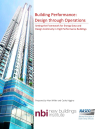 Building Performance: Design through Operations: Setting the Framework for Energy Data and Design Continuity in High Performance Buildings
Building Performance: Design through Operations: Setting the Framework for Energy Data and Design Continuity in High Performance Buildings
July 2014 - 1.14MB PDF - Posted: 7/21/2014
Author(s): Alexi Miller and Cathy Higgins, New Buildings Institute
Building performance monitoring has become commonplace as states and cities have enacted energy monitoring, benchmarking, and disclosure laws, and measured performance data is now available in a variety of formats on various platforms. Nevertheless, systems available in the market today that capture data on a real-time basis often do not present the data in terms of performance indicators that are readily understood and accessed by building managers and occupants. This report examines various sources of building performance data, identifies Key Performance Indicators that support the analysis of building performance data, and discusses how to establish a feedback loop among designers, managers, and tenants.
 Residential Energy Labeling: Strategies for Scalability
Residential Energy Labeling: Strategies for Scalability
March 2014 - 0.87MB PDF - Posted: 3/21/2014
Author: Chris Wagner, Program Manager, NASEO
This report documents recent trends in residential energy labeling and includes updates from 10 states and other national organizations regarding their residential energy labeling policies and programs. Additionally, the report describes ongoing priorities and challenges related to residential energy labeling based on feedback provided by State Energy Offices and other leaders in this field. The report describes overall conclusions and identifies several specific issues that are still being worked through.
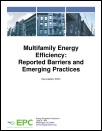
Multifamily Energy Efficiency: Reported Barriers and Emerging Practices
November 2013 - 0.34MB PDF
Author: Energy Programs Consortium
This report identifies commonly-cited barriers to energy efficiency investments in low-income multifamily housing and discusses current efforts to address them. It highlights strategies for deploying public- and private-sector resources, with the goal of increasing the effectiveness of current and future efforts.
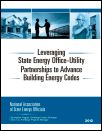 Leveraging State Energy Office-Utility Partnerships to Advance Building Energy Codes
Leveraging State Energy Office-Utility Partnerships to Advance Building Energy Codes
June 2012 - 0.96MB PDF
Author(s): NASEO: Christopher Wagner, Project Manager & Diana Lin, Program Manager
This report provides an overview of existing State Energy Office-Utility partnerships on building energy codes across the country. NASEO identified four common approaches that SEOs are taking to partner with utilities, including training programs and stakeholder engagement processes. The report also offers several cross-cutting lessons that can help inform SEOs on how to engage with utilities on building energy code programs. The report also features case studies on Washington, Iowa, Arizona, and Georgia.
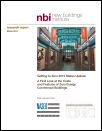 Getting to Zero 2012 Status Update
Getting to Zero 2012 Status Update
A First Look at the Costs and Features of Zero Energy Commercial Buildings
March 2012 - 4.39MB PDF
Author(s): New Buildings Institute, with support from NASEO and the Zero Energy Commercial Buildings Consortium
In this report, New Buildings Institute documents the characteristics, features, and costs of 99 zero-energy and zero-energy-capable buildings, as well as emerging projects, in the United States. It finds that the energy efficiency needed to achieve zero-energy levels is readily available, at what are considered reasonable incremental costs for many owners in almost all climate zones.
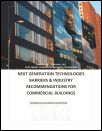 Next Generation Technologies: Barriers and Recommendations
Next Generation Technologies: Barriers and Recommendations
February 2011 - 0.69MB PDF
Author(s): Zero Energy Commercial Buildings Consortium
This report summarizes the barriers and recommendations from the five technology working groups of the Commercial Buildings Consortium (CBC). It offers actionable recommendations to guide the commercial buildings industry on a pathway to a net-zero-energy commercial buildings sector by 2050. It serves as the technology-focused companion report to the Analysis of Cost and Non-Cost Barriers and Policy Solutions.
 Analysis of Cost and Non-Cost Barriers and Policy Solutions for Commercial Buildings
Analysis of Cost and Non-Cost Barriers and Policy Solutions for Commercial Buildings
February 2011 - 0.39MB PDF
Author(s): Zero Energy Commercial Buildings Consortium
The companion publication to Next Generation Technologies: Barriers and Recommendations, this report summarizes key barriers and recommendations for net-zero-energy commercial buildings. This analysis covers codes and standards; integrated design and buildings delivery; benchmarking and performance assurance; voluntary programs; finance and valuation; owners and tenants; and workforce development.